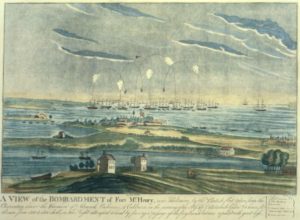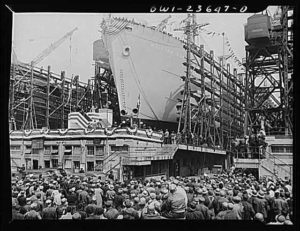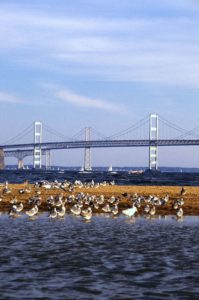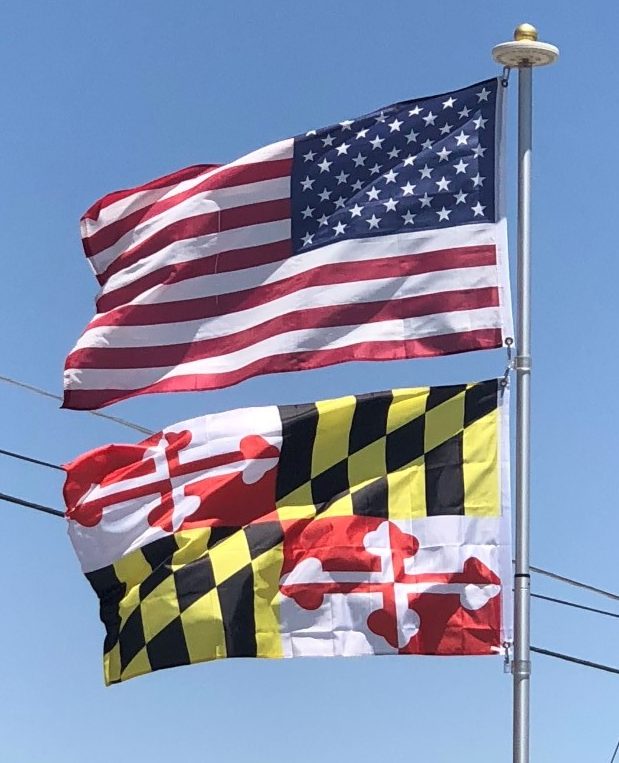Influenced by a changing economy, revolutionary ideals, and preaching by ministers, numerous planters in Maryland freed their slaves in the 20 years after the Revolutionary War.
During the War of 1812, the British military attempted to capture Baltimore, which was protected by Fort McHenry. During this bombardment the song “Star Spangled Banner” was written by Francis Scott Key.

The National Road (U.S. Hwy 40 today) was authorized in 1817 and ran from Baltimore to St. Louis – the first federal highway. The Baltimore and Ohio Railroad (B&O) was the first chartered railroad in the United States.
The state remained with the Union during the Civil War. A new state constitution in 1864 abolished slavery and Maryland was first recognized as a “Free State” in that context.
Maryland instituted its first ever income tax in 1937 to generate revenue for schools and welfare.
Baltimore was a major war production center during World War II. The biggest operations were Bethlehem Steel’s Fairfield Yard, which built Liberty ships; and Glenn Martin, an aircraft manufacturer.

Maryland experienced population growth following World War II, particularly in the Baltimore and Washington, D.C. suburbs. Agricultural tracts gave way to residential communities. Concurrently the Interstate Highway System was built throughout the state, most notably I-95 and the Capital Beltway, altering travel patterns. In 1952 the eastern and western halves of Maryland were linked for the first time by the Chesapeake Bay Bridge, which replaced a nearby ferry service.

Maryland’s regions experienced economic changes following World War II. Heavy manufacturing declined in Baltimore. In Maryland’s four westernmost counties, industrial, railroad, and coal mining jobs declined. On the lower Eastern Shore, family farms were bought up by major concerns and large-scale poultry farms and vegetable farming became prevalent. In Southern Maryland, tobacco farming nearly vanished due to suburban development and a state tobacco buy-out program.
Urban renewal projects have been undertaken, with mixed success, and this process continues to this day.
Economy:
According to the U.S. Census Bureau, Maryland households are currently the wealthiest in the country, with a 2013 median household income of $72,483. Maryland ranked No. 1 with the most millionaires per capita in 2013, with a ratio of 7.7 percent. Also, the state’s poverty rate of 7.8 percent is the lowest in the country.
Maryland’s economy benefits from the state’s close proximity to the federal government in Washington, D.C. with an emphasis on technical and administrative tasks for the defense/aerospace industry and bio-research laboratories, as well as staffing of satellite government headquarters in the suburban or exurban Baltimore/Washington area. Ft. Meade serves as the headquarters of the Defense Information Systems Agency, United States Cyber Command, and the National Security Agency/Central Security Service. In addition, a number of educational and medical research institutions are located in the state. In fact, the various components of The Johns Hopkins University and its medical research facilities are now the largest single employer in the Baltimore area. Altogether, white collar technical and administrative workers comprise 25 percent of Maryland’s labor force, attributable in part to nearby Maryland being a part of the Washington Metro Area where the federal government office employment is relatively high.
